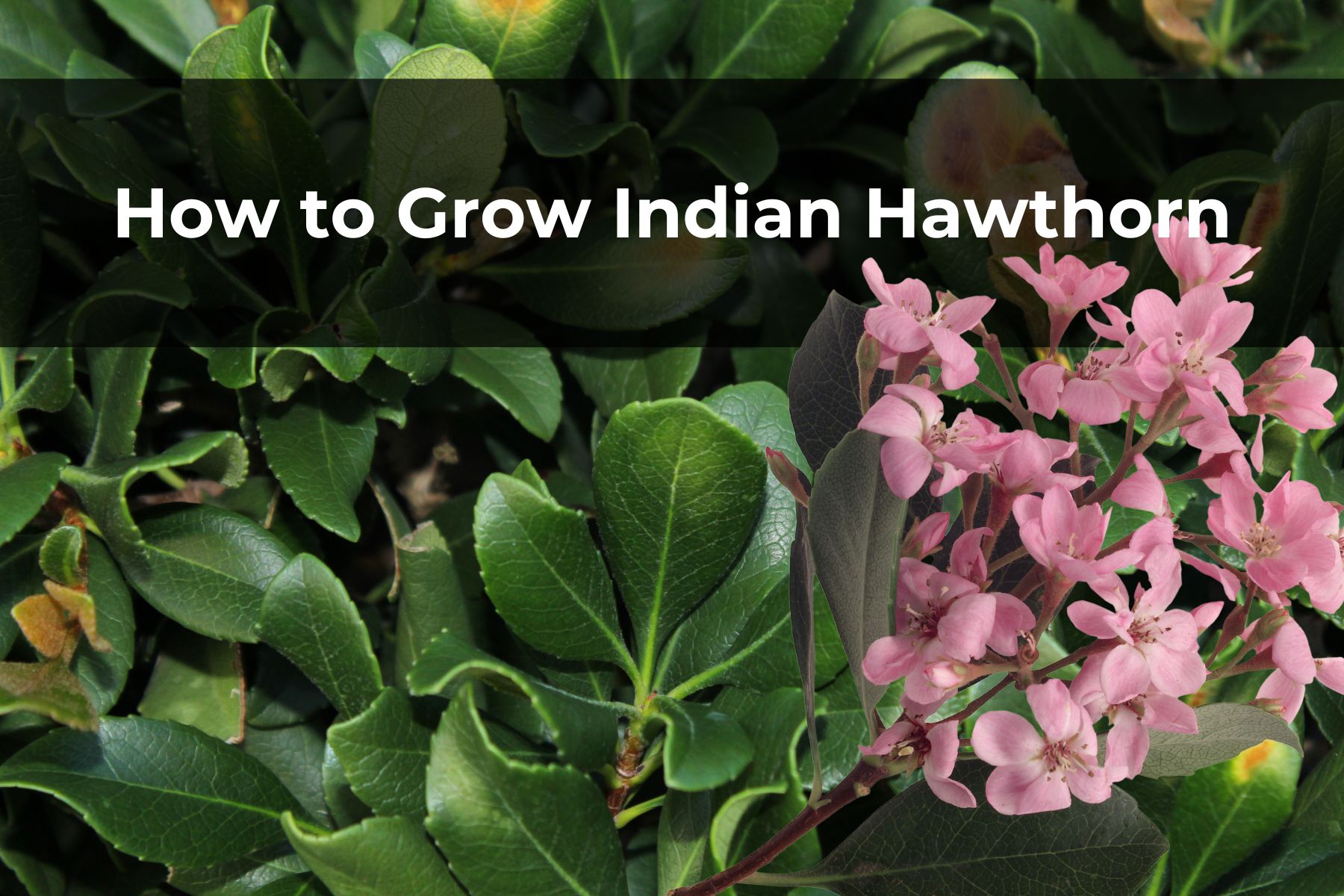Last Updated on April 4, 2024 by Real Men Sow
Indian Hawthorn (Rhaphiolepis Indica) is an evergreen shrub that grows slowly and comes from the Rosaceae family (rose). In spring, it blooms with beautiful pink and white flowers. They are showy and fragrant.
This shrub is a natural native to temperate and subtropical climates. It is a landscaping plant, and its common shape as a hedge is a ball shape. Bonsai enthusiasts also love to use plants.
You can grow the plant in the garden, and you can use some varieties of it for jelly-making or jam-making. Although fruits are very tart when they are raw, they are safe for dogs, cats, and other animals.
Propagating Indian Hawthorn (Rhaphiolepis Indica)
Propagation of Indian hawthorn is through the use of its semi-hardwood cuttings. These are stems that have been shaped but are still firm enough to snap when bent and are usually taken in the middle of summer.
Select a strong branch that is between 4 and 6 inches long with a few nodes. Remove the lower third nodes. Dip the stem into the rooting hormone. Place the stem in a moist mixture of potting soil. Keep the pot in an area with indirect sunlight and water. In about 10 weeks, the roots will begin to form.
Growing from Seeds
The majority of Indian hawthorn plants found in the natural landscape are cultivars. They will not grow from the seeds of your shrub. It is not best that you grow from Indian hawthorn seeds.
Best Place to Grow Indian Hawthorn (Rhaphiolepis Indica)
The plant will not thrive in temperatures below 0°F (-18°C). The shrub’s blooms are usually bright and colorful in spring when it is a berry or late fall or winter. You may plant this shrub year-round and use it in either an individual or group planting.
The Indian hawthorn is a great choice for gardeners. It’s a neat shrub and doesn’t require much maintenance. It can withstand pollution, heat, drought, high humidity, and salty environments all year. This plant is also a great addition to your garden’s winter color.
Best Growing Conditions for the Indian Hawthorn (Rhaphiolepis Indica)
- Light: Full sun for best results or areas with afternoon shade (may become scraggly).
- Soil: Can tolerate salty soils. Most soils are suitable, but mildly fertile soils will produce good results.
- Soil Moisture: Moist soils with good drainage can tolerate dry soils once they are established.
- Sowing, planting, and propagation: Once the plants have stopped growing, take cuttings from autumn-watered plants.
General Care Guide for Indian Hawthorn (Rhaphiolepis Indica)
Water
Indian hawthorns need a moderate amount of soil moisture. While young shrubs prefer moist soil that is not too wet, established shrubs can tolerate drought. If the soil is dry due to lack of rain, give it a good soak but do not overwater. This can cause fungal disease.
Temperature and humidity
This shrub thrives in mild winters and warm climates. The shrub can tolerate temperatures as low as 5 degrees Fahrenheit. However, prolonged colds can cause damage to the leaves and even death. The shrub can withstand temperatures up to 90 degrees. It likes moderate humidity.
Fertilizer
Indian hawthorn shrubs don’t need to be fed heavily. They will however benefit from an all-purpose, slow-release fertilizer in spring. You may mix the compost with the soil to encourage healthy growth.
Pruning
They don’t require a lot of pruning as they grow naturally in a mounded form. You can modify the shape of your shrub by lightly pruning it after it has finished flowering. Any dead, diseased, or damaged stems can be removed at any time during the year.
Pests and Diseases of Indian Hawthorn (Rhaphiolepis Indica)
- Leaf Spot – Cut off infected areas to stop the spread or use a Bactericide.
- Fireblight – If you plan to grow fruit trees such as pear or apple nearby, don’t plant them.
- Aphids – Use soapy water to get rid of aphids

